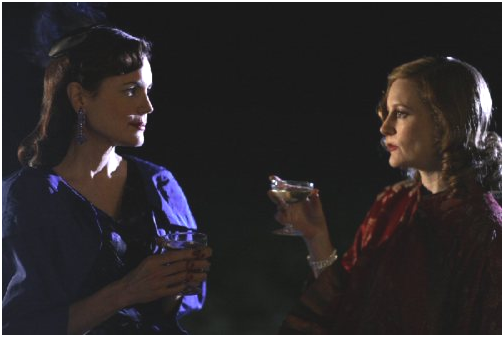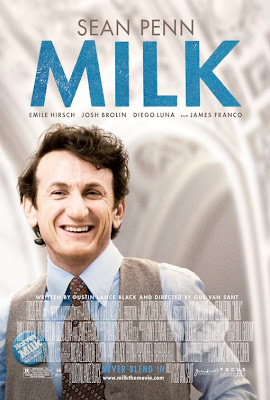 |
| (L-R): Detective Kima Greggs (Sonja Sohn) and Omar Little (Michael K. Williams) on The Wire |
The Wire is the greatest TV series of all time. Period.
Now, I know I’m not really making some bold claim as
many,
many,
many,
manycriticshave professed their unabashed love for the crime drama. No other show has painstakingly depicted the complexities of racism, the inner city and the lives of the underclass. It’s a grandiose statement “about the American city, and about how we live together” and how institutional inequities fail social justice.
When people talk about The Wire, usually with awe and reverie, they discuss the sharp dialogue or the nuanced characters or the statement on race and the criminal justice system. And all of that is amazing. But I think what gets lost is that people forget The Wire’s depiction of queer characters and ultimately its statement on LGBTQ rights.
The Wire portrayed complex, fully developed queer characters, something you don’t typically see in pop culture. With my absolute two favorite characters, Detective Kima Greggs and Omar Little – a black lesbian woman and a black gay man – The Wire confronted assumptions and stereotypes of heteronormativity.
Played by Sonja Sohn, an African-American and Asian-American black woman, kick-ass Detective Kima Greggs was a hard-working, smart, compassionate and loyal. Possessing integrity and earning the respect of her colleagues, she’s a fiercely shrewd and efficient police detective working in narcotics and later homicide. And she’s openly lesbian. From her very first scenes, we witness Kima better at her job than many of the men around her. She’s an indispensable member of the Major Crimes Unit. Outside of work, we see Kima with her partner Cheryl, a journalist. Later in the series, we see how work stress (especially after Kima is shot), conflicting goals, infidelity, parenthood and alcohol strain their relationship. After they break up, we see Kima and Cheryl come together to raise their son, as well as Kima’s fantastic “hustler” version of
Goodnight, Moon.
 |
| The Wire‘s Detective Kima Greggs (Sonja Sohn) |
With his signature trench coat, shotgun and trademark whistle, Omar (portrayed by the effortlessly charismatic Michael K. Williams) was a badass stick-up man who everyone in the hood respected, even those who wanted him dead. And he was a proud gay black man. Intelligent, brave, sensitive and funny, he abided by a strict moral code. He loved Honey Nut Cheerios and Greek mythology, loathed profanity and dropped nuggets of wisdom on the similarities between lawyers and thieves and says things like, “Ares, same dude different name” and “You come at the king, you best not miss.” The media is littered with tropes about gay men. Yet here was Omar – a tough, fearless, modern-day Robin Hood robbing drug dealers – who just happened to be gay and broke every stereotype.
The Wire showed both Kima and Omar’s romantic relationships. We witness them laugh, kiss, have sex, and fight. In short, complete relationships. It was great to see to see a gay and a lesbian relationship amidst all the heterosexual relationships. When queer relationships are depicted on TV, they’re often sanitized and peppered with chaste kisses, when the straight relationships are not. Queer characters may be clothed or the relationships are put on the back burner, not in integral part of the characters’ lives. With The Wire, we see queer characters having sex. We see Omar naked. Passion, raw sexuality, and tenderness abound in the queer relationships. We shouldn’t be plagued by heteronormativity and just see straight relationships as the default and queer relationships as peripheral. Queer relationships were entrenched in the series.
It’s also interesting to see how other
Wire characters treat homosexuality. When asked by Carver, “If you don’t mind can I ask you when was it that you first figured you liked women better than men?” To which she replies, “I mind.” Detective McNulty praises Kima, telling her the only other competent female detective he ever worked with was a lesbian (ahhh a back-handed, sexist compliment…thanks, Jimmy!) Omar is often referred to with gay slurs like the F-word and C-sucker. When drug kingpin Avon Barksdale finds out from his crew that Omar is gay, he quadruples the bounty on him.Many of the characters seem to view lesbians as masculine, the desired gender, and gay men as effeminate, denigrating the feminine. The portrayal of Kima and Omar question, challenge and subvert these stereotypes.
 |
| The Wire‘s Omar Little (Michael K. Williams) |
Now, it’s great we’re starting to see more and more queer characters on-screen (Modern Family, True Blood, Grey’s Anatomy, Will & Grace, Glee, The L Word, Queer as Folk, Buffy, Roseanne). Although I desperately wish we were seeing more bisexual (although thank you for Callie Torres, Grey’s Anatomy!) and transgender characters. But usually when we see queer characters, we see white, upper class/upper middle class characters. As if no queer people of color or queer people who are impoverished or even working class exist.
Class and race are so often erased in our media (one of the many reasons Roseanne was so groundbreaking and amazing). Not every queer person lives in Park Slope or West Hollywood attending art gallery openings and having nannies. The Wire depicts financially struggling and impoverished queer women and men of color.
Stereotypes plague queer characters on sitcoms. And yes, sitcoms differ from dramas. Kima and Omar (while Omar does seem too badass to be an actual person) both seem very real. They exhibited foibles and weaknesses along with their strengths. But their relationships didn’t define them. Rather, they were an integral component of their lives. Kima and Omar weren’t beholden to these stereotypes that alert us to “Oh, this is a gay character!” Fully developed and fleshed out, they didn’t fall prey to common tropes.
But Kima and Omar weren’t the only queer characters. Major Rawls, a gay-slur-spewing jerk, is a closeted gay man as we see him briefly at a gay bar. Snoop (Felicia Pearson), the frighteningly ruthless, gender non-conforming soldier in Marlo’s crew (sidebar, my fave scene with her is when she goes to Home Depot), is a lesbian as we learn after Detective Bunk tells her he’s thinking about some pussy and she replies, “Me too.” Both Rawls and Snoop, along with Greggs and Omar, challenge gender and heteronormative assumptions.
 |
| The Wire‘s Snoop (Felicia “Snoop” Pearson) |
Despite my adulation,
The Wire is far from perfect. (Say what??)
The Wire boasts strong, complex female characters (Kima Greggs, Ronnie, Beadie, Brianna Barksdale, Snoop) Yet it sadly suffers from
a woman problem. As progressive as it is,
sexism taints it. Just because a film or TV series contains
a “portfolio of ‘strong women’” doesn’t automatically deem it feminist.
The Wire often focus on the male characters. While we see myriad perspectives from the male characters, the women aren’t typically offered the same screen-time or scope, often existing peripherally. David Simon himself admitted that his female characters could be called “
men with tits.” Ugh. While based on a couple lesbian officers he knew, Simon wrote Kima Greggs “like a man.” We often witness how institutional racism and classism oppress the male characters and how gendered notions of masculinity harm men. Yet we rarely see how sexism impacts the women from their perspective. But the flaws in its depiction of women doesn’t unravel the tremendous good
The Wire has done.
“The characters on The Wiredemonstrate a departure from heteronormative assumptions in television complicated by race. The prospect of seeing homosexual minority couples has remained largely untouched by major media outlets and it is therefore worth applauding. While the series may lack a strong female presence to challenge traditional heterosexual gender roles, the work that it has done involving homosexual partnerships serves as one of the sole examples of normalized homosexuality.”
When asked why he created an out lesbian and a gay stick-up man, creator David Simon responded, “
Because gay people exist.” Is there any more perfect reason than that? He went on to say that he knew lesbian detectives and openly gay stick-up men in Baltimore. Whatever failings Simon suffered from not knowing how to write about women, he knew to include gay characters. It shouldn’t be so surprising or groundbreaking. And yet it is for the media too often erases queer (and queer people of color’s) perspectives. And that’s just one of the many reasons why
The Wire should be celebrated.
The Wire‘s routine depiction of gay and lesbian characters conveyed queer individuals and queer relationships as normal, loving and valid.
The Wire refused to make heterosexuality the default sexual orientation.
Weaving diverse voices and social justice issues together in a compelling, thought-provoking, passionate way — that’s what The Wire did best. Too often the media silences and erases queer people of color. The Wire brought those perspectives to the forefront. Quoting Detective Lester Freamon, evolving into the show’s unofficial mantra, “And all the pieces matter.” And so do all the various genders, sexualities, races and identities of the characters involved. Just like real life…or at least how real life should be.
P.S. Michael K. Williams (Omar), who’s incredibly gracious and charming – yes, I’m going to brag for a moment…I was lucky enough to meet him (!!!), as well as Andre Royo (Bubs) and Jamie Hector (Marlo) who were also super nice – filmed a PSA for marriage equality in Maryland. If you’re an Omar fan, you should totes watch it. Oh, indeed.


































